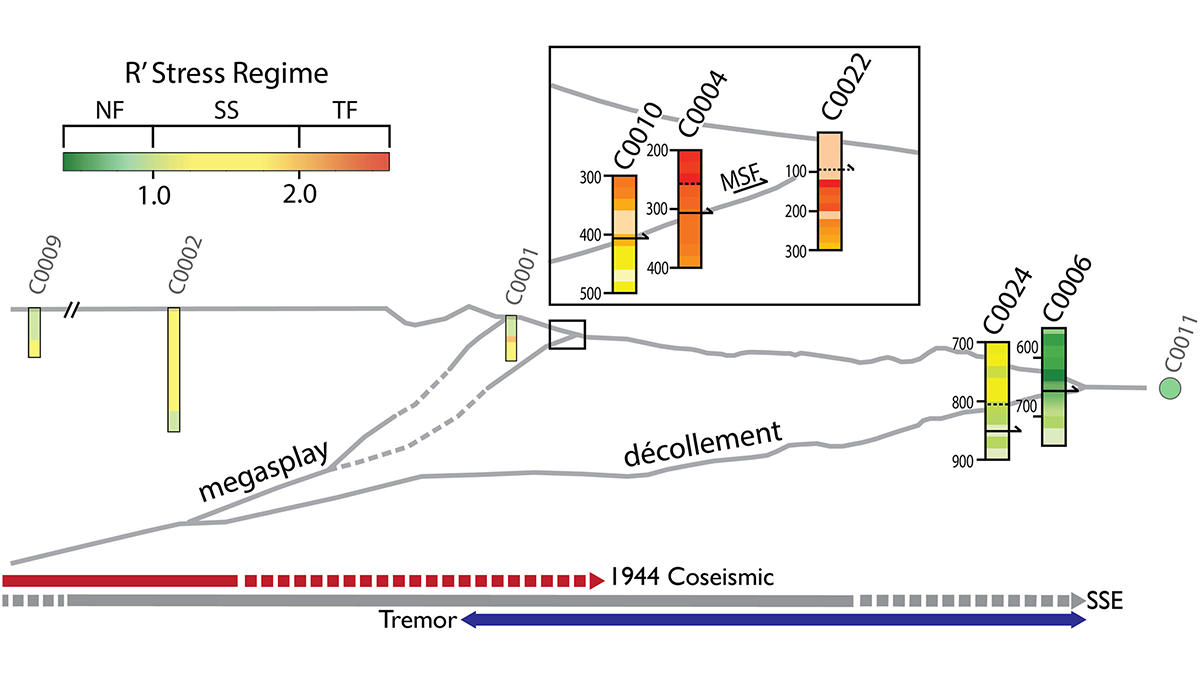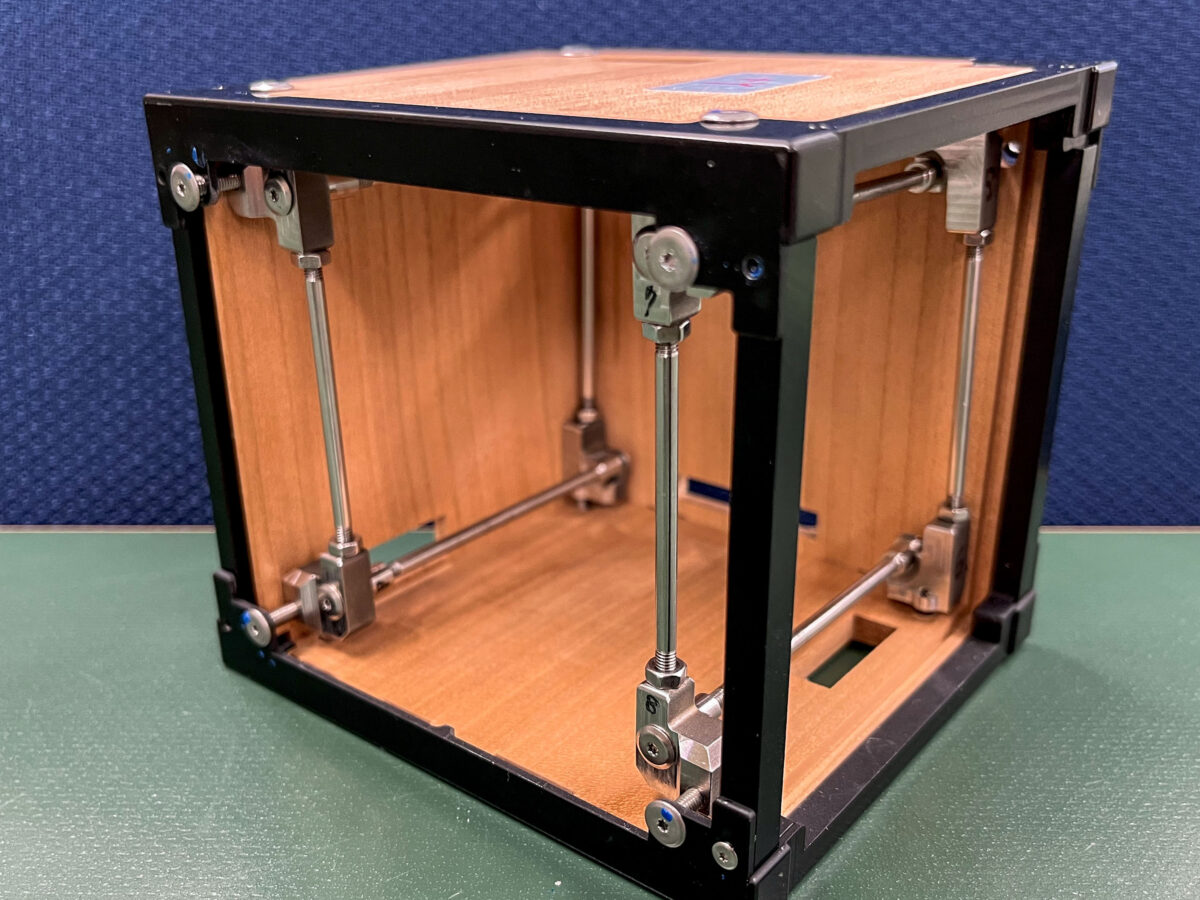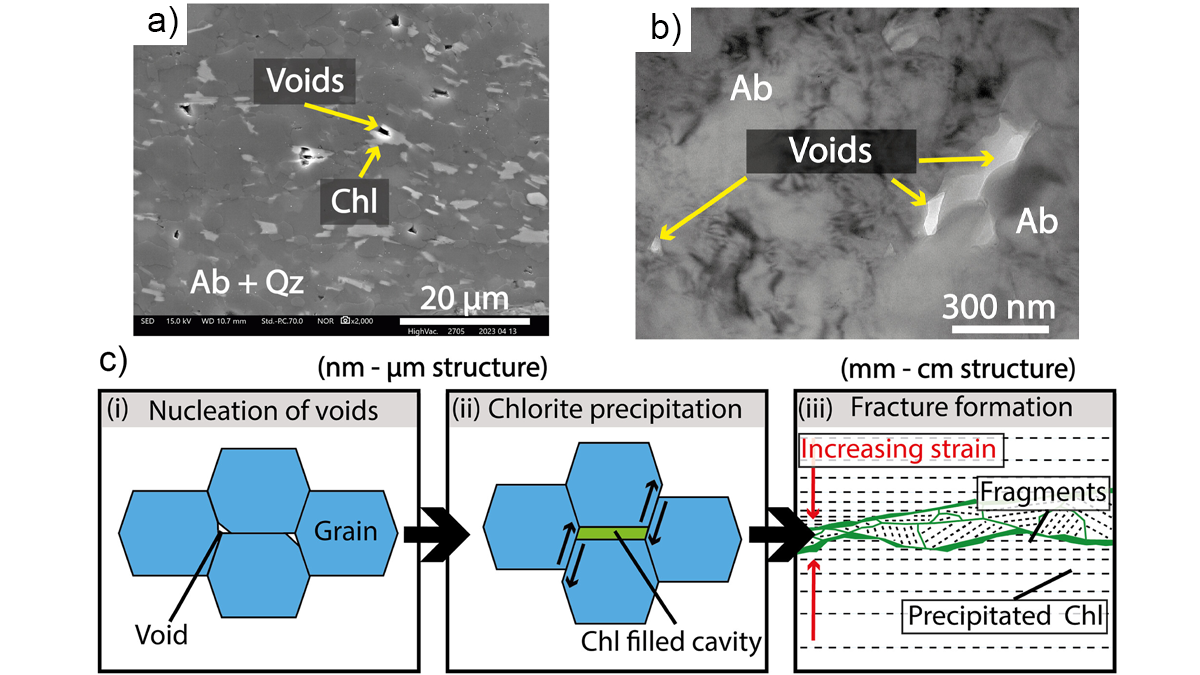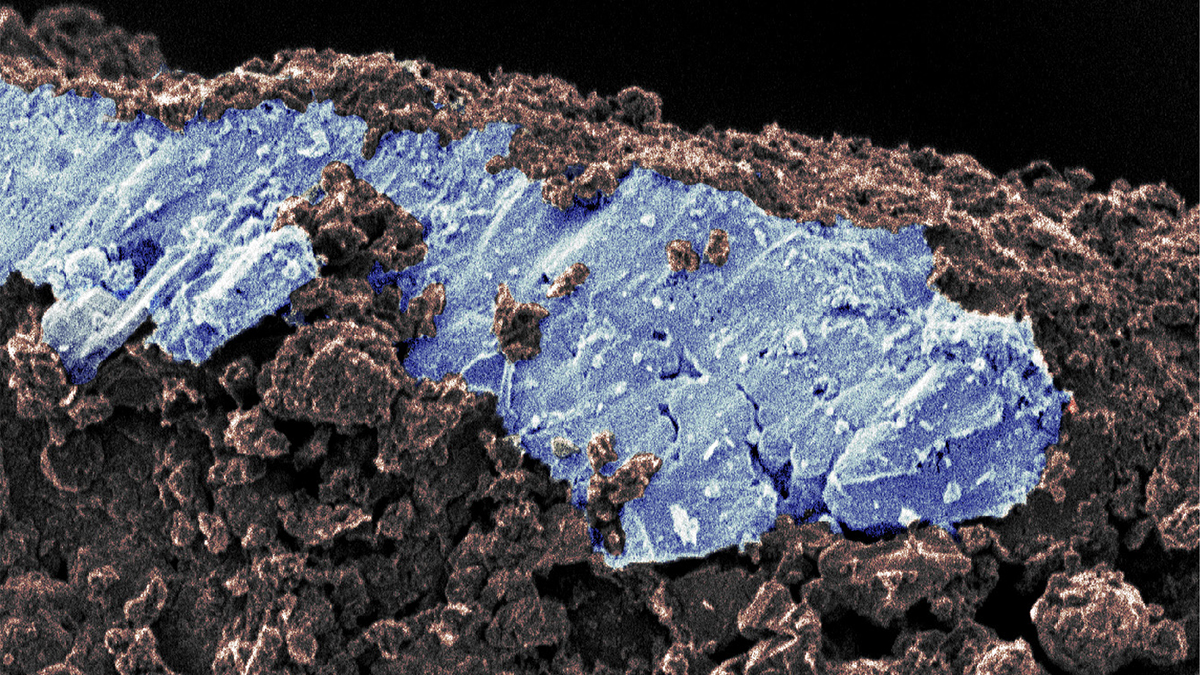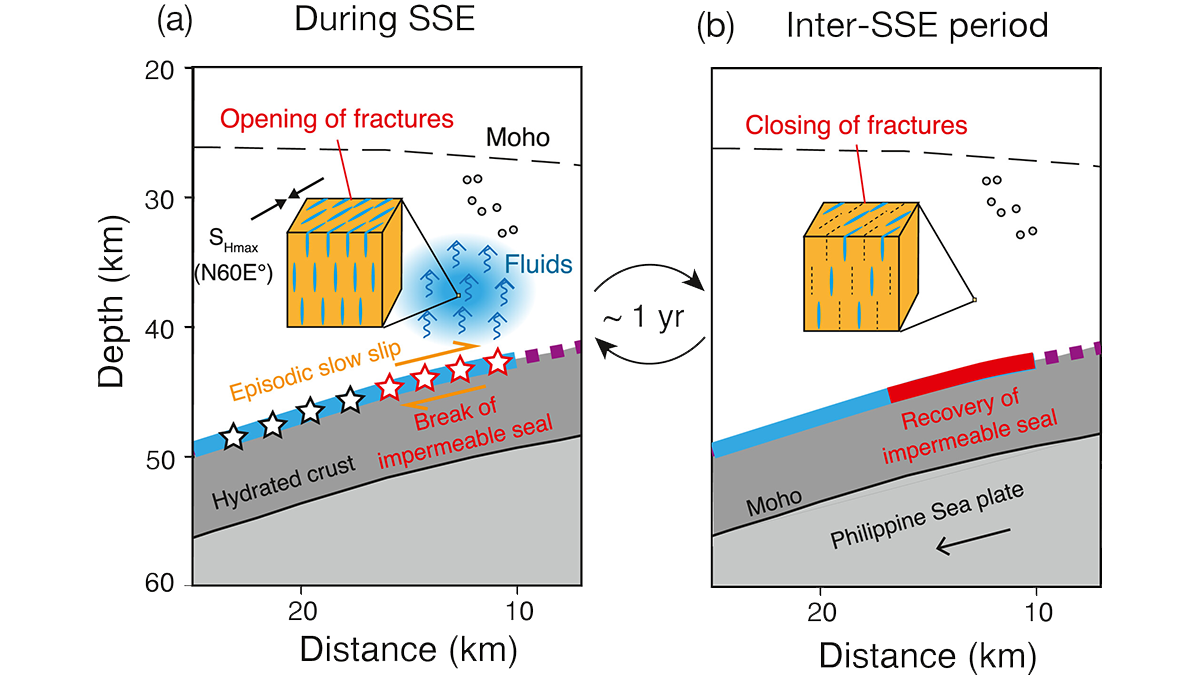The Nankai subduction zone, in southern Japan, has hosted several large magnitude 8+ earthquakes during the last three hundred years. But, how stressed is it right now?
Japan
A New Satellite Material Comes Out of the Woodwork
With lessons learned from their first attempt, Kyoto University scientists hope a second CubeSat made of magnolia will spark an age of wooden spacecraft.
Creep Cavitation May Lead to Earthquake Nucleation
Ultramylonites, rocks of ultrafine grainsize, bring records of nanometer-scale cavities generated at the base of seismogenic crust along Japan’s largest on‐land fault.
Asteroid Samples Suggest a Solar System of Ancient, Salty Incubators
The discovery of salty mineral evaporites on Ryugu indicates that watery environments may have been widespread in the early solar system.
Cyclic Opening of Deep Fractures Regulates Plate Boundary Slip
Seismic anisotropy changes through time suggest that cyclical opening of fluid-filled fractures is synchronized with subduction zone slow slip events.
Landslides in Art Part 35 – Landslide in Front of the Hodogaya Tunnel on the Tōkaidō (1924) by Oda Kanchō
The Landslide Blog is written by Dave Petley, who is widely recognized as a world leader in the study and management of landslides. It is over three years since I last posted in my series on Landslides in Art – an unintended gap. For those who are interested, previous editions can be found on the […]
Hiroshima Fallout May Offer a Glimpse of the Early Solar System
Bits of glass called Hiroshimaites may have formed by processes similar to those that formed the Sun and the planets.
Plate Boundaries May Experience Higher Temperature and Stress Than We Thought
Surface heat flux data shed light on conditions deep below Earth’s surface, at a tectonic plate interface where major earthquakes initiate.
Japan’s SLIM Spacecraft Lands on the Moon
The mission hopes to advance space exploration using a lightweight lander and a high-precision landing system.
Landslides from the 1 January 2024 Noto Peninsula Earthquake in Japan
The Landslide Blog is written by Dave Petley, who is widely recognized as a world leader in the study and management of landslides. On 1 January 2024, the Mw=7.5 Noto Peninsula Earthquake struck the Ishikawa Prefecture in Japan. AS of the time of writing, 168 people are known to have lost their lives, whilst up […]

